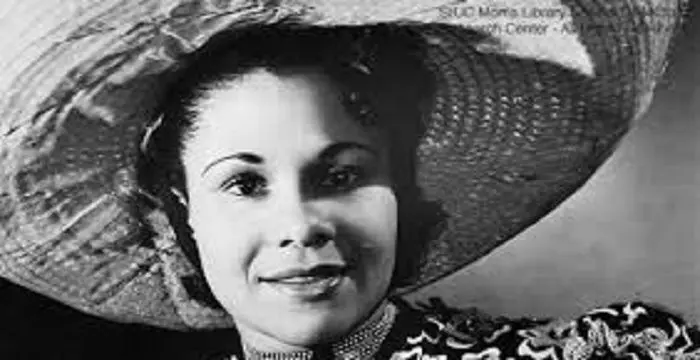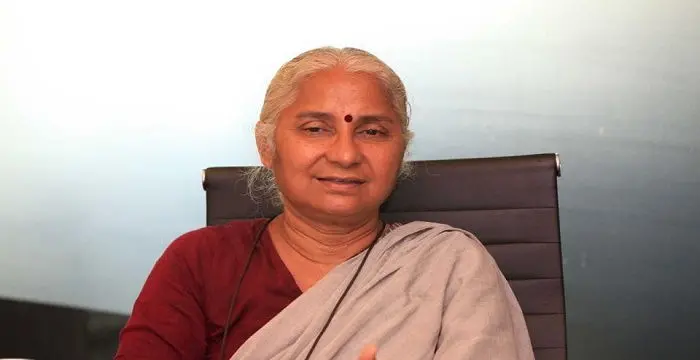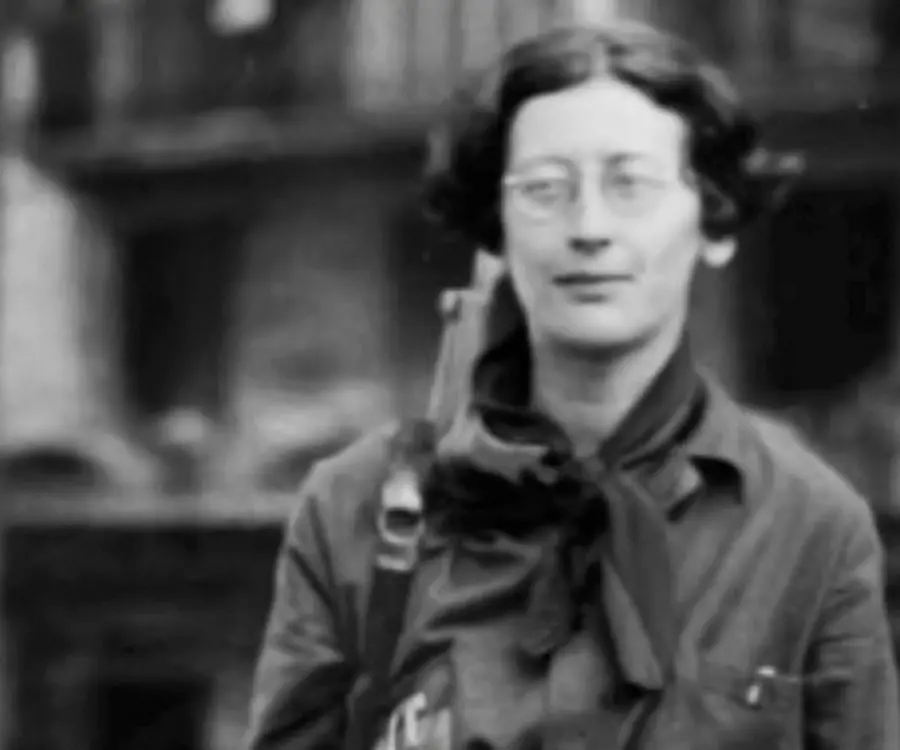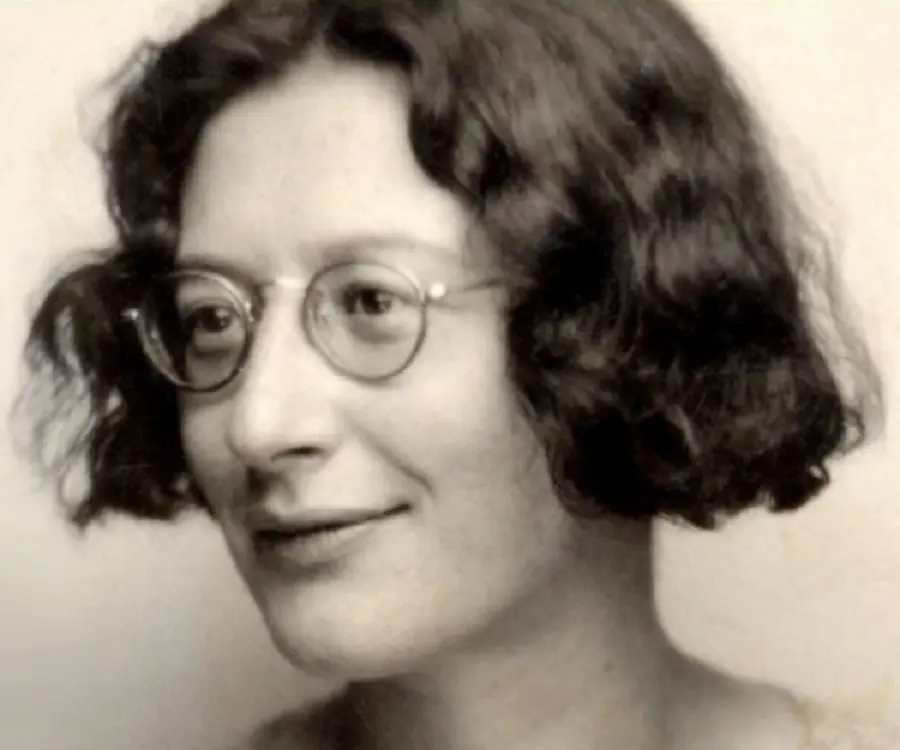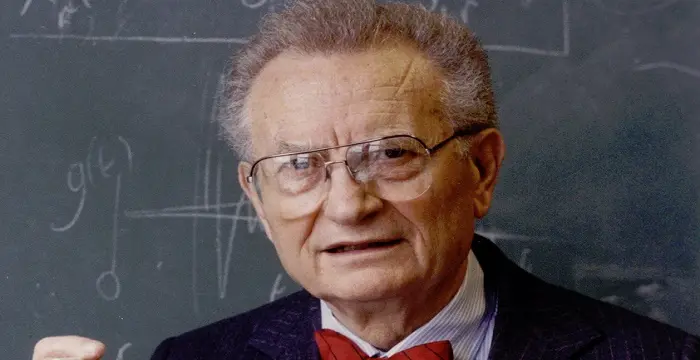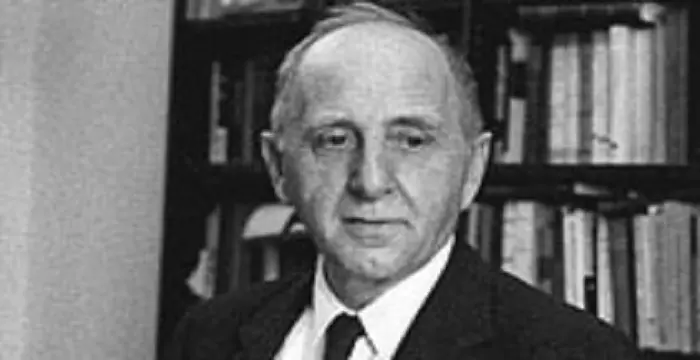
Simone Weil - Social Activist, Timeline and Family
Simone Weil's Personal Details
Simone Weil was a French philosopher, Christian spiritualist and an activist who was a part of the French Resistance during World War II
| Information | Detail |
|---|---|
| Birthday | February 3, 1909 |
| Died on | August 24, 1943 |
| Nationality | French |
| Famous | Intellectuals & Academics, Philosophers, Economists, Mystic, Social Activist |
| City/State | Paris |
| Siblings | André Weil |
| Universities |
|
| Birth Place | Paris |
| Religion | Christian |
| Gender | Female |
| Father | Bernard Weil |
| Mother | Salomea Reinherz |
| Sun Sign | Aquarius |
| Born in | Paris |
| Famous as | Philosopher, mystic and social activist |
| Died at Age | 34 |
// Famous Social Activist
Emily Greene Balch
Emily Greene Balch was an American economist, sociologist and pacifist who won the 1946 Nobel Peace Prize. This biography of Emily Greene Balch provides detailed information about her childhood, life, achievements, works & timeline.
Katherine Dunham
Katherine Dunham was an American dancer and choreographer, credited to have brought the influence of Africa and the Caribbean into American dance. This biography provides information about her childhood, life, achievements, works & timeline.
Medha Patkar
Medha Patkar is a well-known Indian social activist. This biography profiles her childhood, activism, contribution and some interesting facts about her.
Simone Weil's photo
Who is Simone Weil?
A renowned French philosopher, social activist and religious mystic, Simone Weil is recognized for her strong social commitments and extensive analysis of various attributes of the modern civilization. To put it in other words, Simone Weil was an incredible and outstanding intellectual persona identified for her intelligence, empathy for the working class and strong religious belief in Christ, despite the fact that she was a Jew. Although born and raised in an affluent bourgeois family and classically educated, Weil empathized with the plight of the poor from a very young age. Simone de Beauvoir, Weil’s college mate and an eminent feminist writer, in her book ‘Memoirs of a Dutiful Daughter’ extolled Weil’s intelligence and her generous nature. Dubbed as one of the most original thinkers of her era, Simone penned a slew of poems and journals during her lifetime, although much of her works were published posthumously. Her works amalgamated irony with a highly intellectual prose style and depressed theology. Intellectually precocious, she was a rebel at heart and chose to remain a virgin all throughout her life. Explore more about her life, childhood and timeline in the biography below.
// Famous Mystic
Meister Eckhart
Explore this biography to know the profile, childhood, life and timeline of Meister Eckhart, who brought in a great change in Germany with his groundbreaking thesis and ideas.
Biography detail
Simone Weil’s Childhood & Early Life
Born on 3 February 1909, in Paris to affluent Alsatian agnostic Jewish parents, Simone Weil boasted of a bloodline whose outstanding trait was its intellectual precocity. Her father, Bernard Weil was an Alsace physician and her mother, Selma Weil (née Salomea Reinherz), was an Austro-Galician who hailed from a rich Jewish business family. As a child, Selma wanted to become a doctor, but her father did not support her decision. Therefore, as a mother, she wanted the best education for her kids. Simone’s elder brother, Andre Weil was a mathematical whiz, who could easily solve numerical problems of doctoral level, even when he was twelve years of age. As fate would have it, Andre Weil went on to become one of the greatest mathematicians of the 20th century. Selma Weil had a phobia of microbes and passed on her excessive habits to her children. Hence, Simone was brought up to avoid all forms of physical contact in her life. She also felt strongly about food and gave up sugar at an early age of six, as it was not rationed to French soldiers in the war. All her life, she suffered from sinusitis, severe headaches and poor physical health, and owing to malnutrition, she suffered from mystical experiences.
Education
A young girl with surpassing intellectual brilliance, Simone was fluent in ancient Greek, Sanskrit, and many other modern languages. As a child, she attended Lycée Fénelon and under the tutelage of famous anti-conformist French philosopher Alain (Emile Auguste Chartier), she took her baccalaureate in philosophy at an early age of 15. Endowed with exceptional brilliance, Simone cracked the entrance examination to qualify for further studies at France’s poshest school École Normale, noted for its lofty intellectualism and academic rigor. She scored highest on a nationwide entrance examination and in 1931 graduated with the highest rank. During this time, she drew spotlight because of her adamant and inflexible attitude. She was nicknamed as “Red Virgin” for being stubborn and myopic. In 1931, she was awarded with Agrégation in Philosophy, which is similar to Doctorate degree at École Normale Supérieure. There she completed a dissertation on the subject ‘Science & Perception in Descartes’. She surprised the city Fathers by coordinating and processing with the unwaged workers of the town.
As a Teacher, Philosopher and a Social Activist
Simone wanted to teach philosophy to the laborers. However, owing to her frail health, she decided to skip teaching and spend her life knowing more about the actual needs and requirements of the workers. She not only gave free lessons to railroad, mine and field workers, but also donated most of her salary and time helping them in their fight for economic justice. From mid-1931 to 1938, she worked in several schools including Le Puy, Auxerre, Roanne, Bourges, and Saint-Quentin. During her job as a teacher, her even the brightest of students failed in mid-year examinations due to which she was asked to resign. She denied putting down her papers and as supported by her students despite the fact that her unorthodox teachings were spoiling their academic careers. After this, she was dismissed from the post of teacher and for this, she showed gratitude to her seniors announcing that she had always considered firing as the usual climax of her career. After this, she again taught at the Lycée, in Roanne and there she told the students "Whenever, in life, one is actively involved in something, or one suffers violently, one cannot think about oneself." Apart from this, she claimed that experience must be the basis of writing. In context of this she once said, "The intelligent man who is proud of his intelligence is like the condemned man who is proud of his cell." Besides teaching there, she continued helping unemployed and oppressed workers. Soon after, she left teaching and went on to work and live at the lowermost rank of French factory system, as an untrained woman worker for one year (1934-35). She performed piece-rate factory work but because of her unusually small and weak hands with a combination of too much of intelligence, she failed to work expeditiously. So, she paid her parents to provide her food and when she had no money left, she remained hungry. During this time, she suffered from severe migraine headaches, which resulted in physical and mental weakness and hampered her work. Despite of being a non-violent, she worked as volunteer with Republicans in the Spanish Civil War in 1936. She was referred as a “Don Quixote" by the novelist Georges Bataille.
After observing the terrors of the war in Spain, she exposed disappointment towards the philosophies and ideas in her journals. She witnessed that Communism led to the foundation of a State Dictatorship. It was in 1934, when she wrote, “From human beings, no help can be expected.” After this, Simone got impressed and fascinated with ‘anarchism’ and ‘syndicalism’ for some time and during this span of time; she worked for the anarchist trade union movement La Révolution Prolétarianne, near Zaragoza, Spain. Unfortunately, there she met with an accident in which she was badly burned and injured with boiling oil and had to go to Portugal for treatment.
Change of Religion & Mystic Experiences
It was in 1935 that she was drawn towards Christianity, but refused to be baptized. She read Greek poetry and listened to Gregorian music and it was in 1937, when she had her first spiritual experience in the Basilica of Santa Maria degli Angeli, in the chapel of St. Francis of Assisi, in Assisi, Italy. She explained her mystic experience saying, “something stronger than I was compelled me for the first time in my life to go down on my knees." Later on, in 1938, Simone Weil converted her religion from Jewish to Christianity. In the same year, she had other mystic experience at the abbey of Solesmes, France, where she met a young English Catholic lady who familiarized her to the English metaphysical poetry of 17th century, particularly the poem ‘Love’, penned by George Herbert. In the course of learning the poem, she recited the lines time and again as a prayer and during one of these recitals, she felt the presence of Jesus Christ. Later on she wrote, "Christ himself came down and took me." It was in the same year, when she read the complete Ancient Testament for the very first time. In the meantime, her health condition deteriorated, as she was physically very weak and become prone to illness. Rather than expressing grief on her situation, she took her pain as a very vital step in the expedition of finding the truth. Hence, by quitting the alphabet ‘I’, she trusted that she was building a room for the holy God in her soul for the divine and eternal truth. Simone Weil met Father Joseph-Marie Perrin in Marseilles and had long conversations on Christianity and on her spiritual experiences.
Escape & Death of Simone Weil
At the time when Germans conquered Paris during World War II and there was Nazi rule all over the country, Weil family shifted to the south of France, where she worked as a farm servant.In 1942, she eluded with her parents to the United States of America. She temporarily lived in New York, in Harlem with the poor people. At that time, she used to attend the daily Mass at Corpus Christi Church. Later, Simone went to London to be a part of French Resistance. It was in 1943 that she was diagnosed with tuberculosis and was asked to take complete rest and eat healthy. Nevertheless, she refused to avail any special treatment owing to her political philosophies and participation in social activism. Besides this, to categorize herself with the French people, who were under the rule of Germans, she denied eating more than the sanctioned ration in France, which was under the control of Germans. This led to her ill health and weakened her immunity and functional organs. Simone Weil was shifted to Ashford Sanatorium in Kent County, England. After few months of her staying in the sanatorium, Simone Weil passed away on 24 August 1943.
Publishing Her Works
Simone, before departing from France, handed all her notebooks and other write-ups to Gustave Thibon, an unprofessional theologian in charge of a catholic agricultural colony, which became the base of her posthumous works. Gustave introduced her to Father Joseph-Marie Perrin. Father Perrin also in the due course of time published Simone’s letters penned to him with some essays under the title — ‘Attente de Dieu’ (Waiting for God). Apart from this, when she was a teacher in Roanne, Anne Reynaud-Guérithault, one of her students, took and preserved all the notes, which she took from Simone. Those notes of philosophy were issued years later and are now studied and used as course books in college-level programs in philosophy.
Her Important Writing Works
Simone Weil’s writing works were collected and published posthumously. Her most significant writing works include ‘La Pesanteur et la grce’ (1947, Gravity and Grace), which is a compendium of spiritual essays and aphorisms, ‘L'Enracinement’ (1949, The Need for Roots), an essay based on the duties of the person and the state, ‘Attente de Dieu’ (1950, Waiting for God), a biography with mystic effect, ‘Oppression et Liberté ‘(1955, Oppression and Liberty), a selection of political and philosophical essays based on war, factory work, language, and other such topics, and the ‘Three Volumes of Cahiers’ (1951–56, Notebooks).
// Famous Economists
Bertil Gotthard Ohlin
Bertil Gotthard Ohlin was a famous Swedish economist. This biography profiles his childhood, family life & achievements.
Emily Greene Balch
Emily Greene Balch was an American economist, sociologist and pacifist who won the 1946 Nobel Peace Prize. This biography of Emily Greene Balch provides detailed information about her childhood, life, achievements, works & timeline.
Paul Samuelson
Nobel laureate Paul Anthony Samuelson is referred to as the ‘Father of Modern Economics’. This biography profiles his childhood, life, career, achievements and interesting facts about him.
// Famous Intellectuals & Academics
Bertil Gotthard Ohlin
Bertil Gotthard Ohlin was a famous Swedish economist. This biography profiles his childhood, family life & achievements.
Emily Greene Balch
Emily Greene Balch was an American economist, sociologist and pacifist who won the 1946 Nobel Peace Prize. This biography of Emily Greene Balch provides detailed information about her childhood, life, achievements, works & timeline.
Martin Buber
One of the greatest philosophers to have ever walked on earth, Martin Buber contributions to philosophy is a long-standing one. Explore all about his profile, childhood, life and timeline here.
Paul Samuelson
Nobel laureate Paul Anthony Samuelson is referred to as the ‘Father of Modern Economics’. This biography profiles his childhood, life, career, achievements and interesting facts about him.
Lao Tzu (Laozi)
Lao Tzu was a legendary Chinese philosopher who wrote the important “Daodejing”. This biography profiles his childhood, life, career, achievements and timeline.
Simon Kuznets
Simon Kuznets was a noted Russian-American economist, statistician, demographer, and economic historian. Check out this biography to know about his childhood, family life, achievements and other facts related to his life.
Simone Weil's FAQ
What is Simone Weil birthday?
Simone Weil was born at 1909-02-03
When was Simone Weil died?
Simone Weil was died at 1943-08-24
Where was Simone Weil died?
Simone Weil was died in Ashford
Which age was Simone Weil died?
Simone Weil was died at age 34
Where is Simone Weil's birth place?
Simone Weil was born in Paris
What is Simone Weil nationalities?
Simone Weil's nationalities is French
Who is Simone Weil siblings?
Simone Weil's siblings is André Weil
What was Simone Weil universities?
Simone Weil studied at Lycée Fénelon, Paris, France (1920-24), Lycée Victor Duruy, Paris, France (1924-25), Lycée Henri-IV (1925-28), BA Philosophy, École Normale Supérieure (1928-31)
What is Simone Weil's religion?
Simone Weil's religion is Christian
Who is Simone Weil's father?
Simone Weil's father is Bernard Weil
Who is Simone Weil's mother?
Simone Weil's mother is Salomea Reinherz
What is Simone Weil's sun sign?
Simone Weil is Aquarius
How famous is Simone Weil?
Simone Weil is famouse as Philosopher, mystic and social activist

